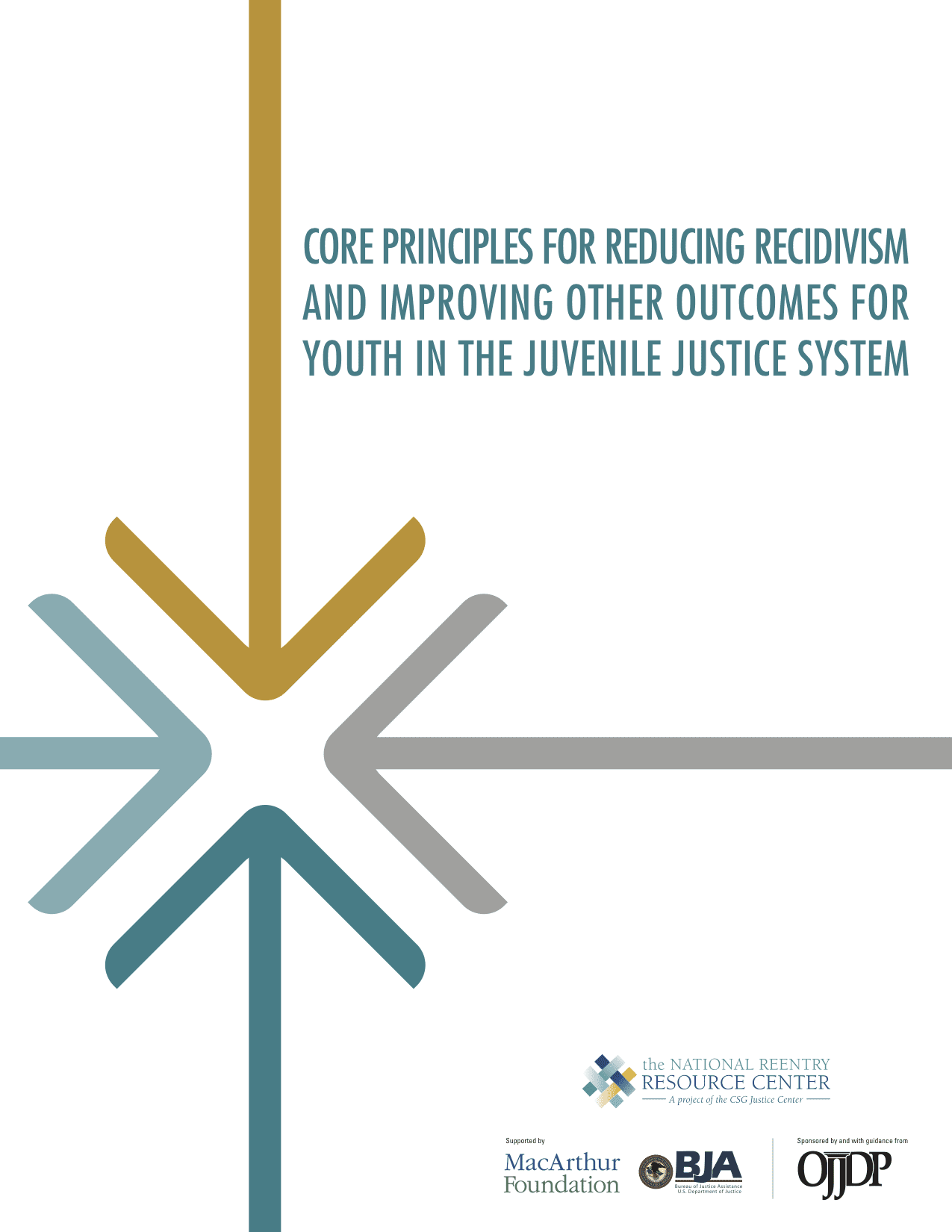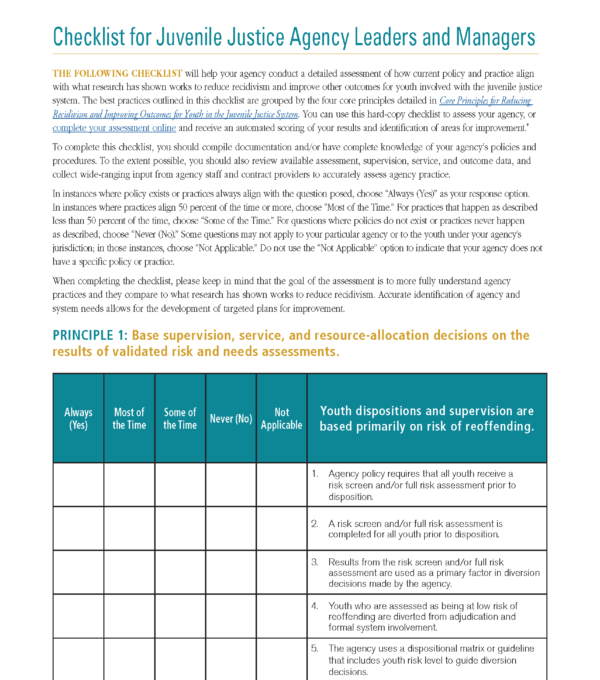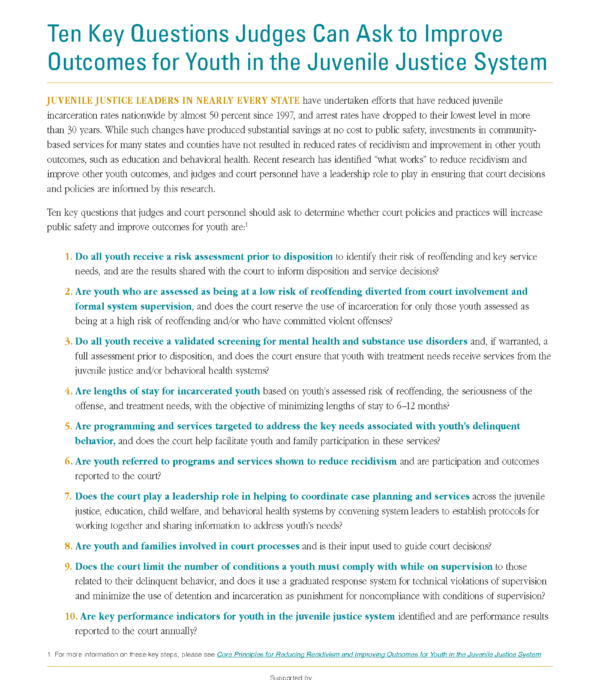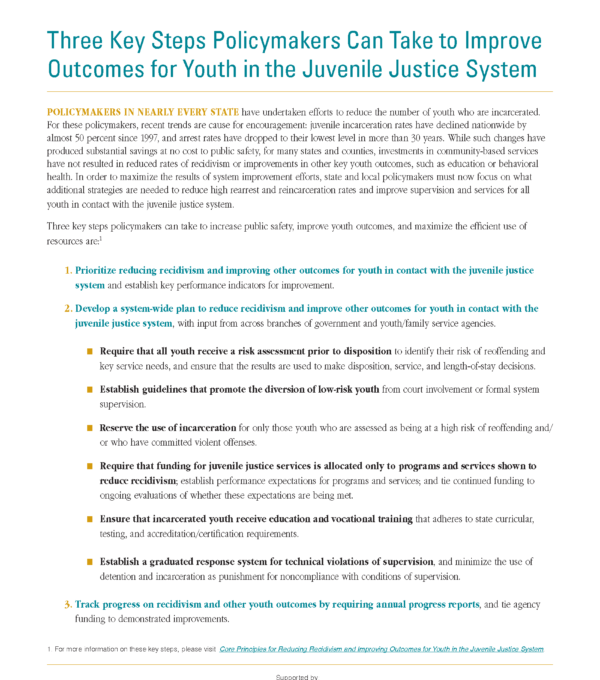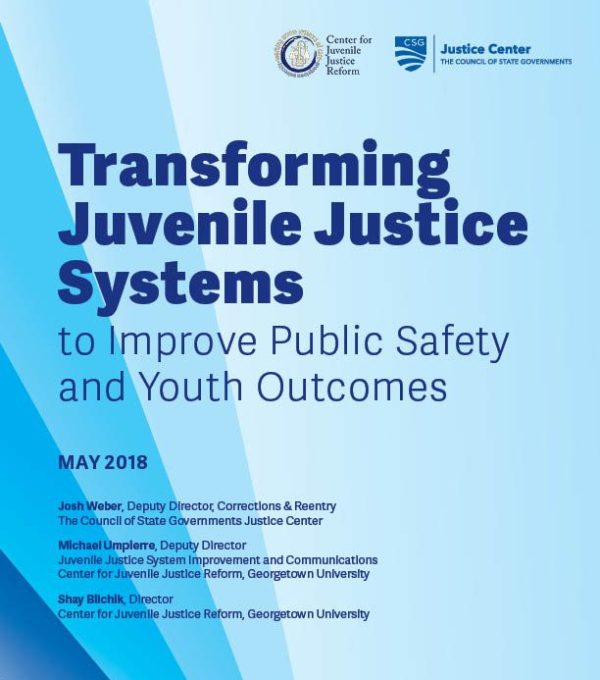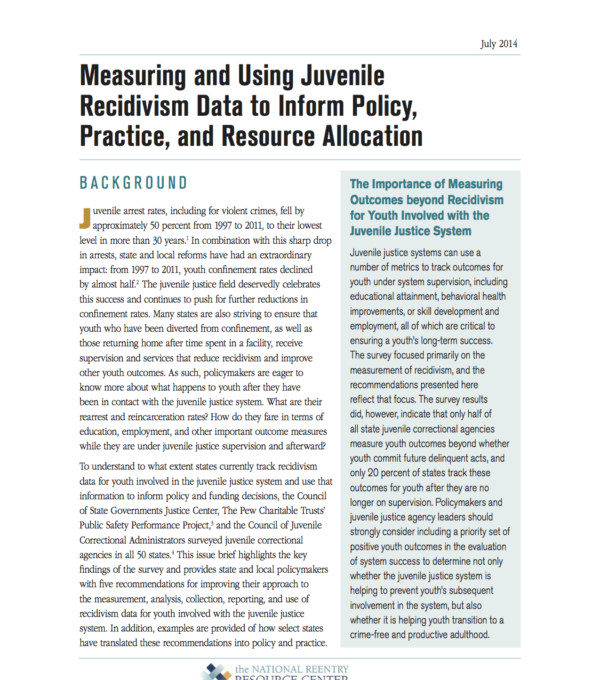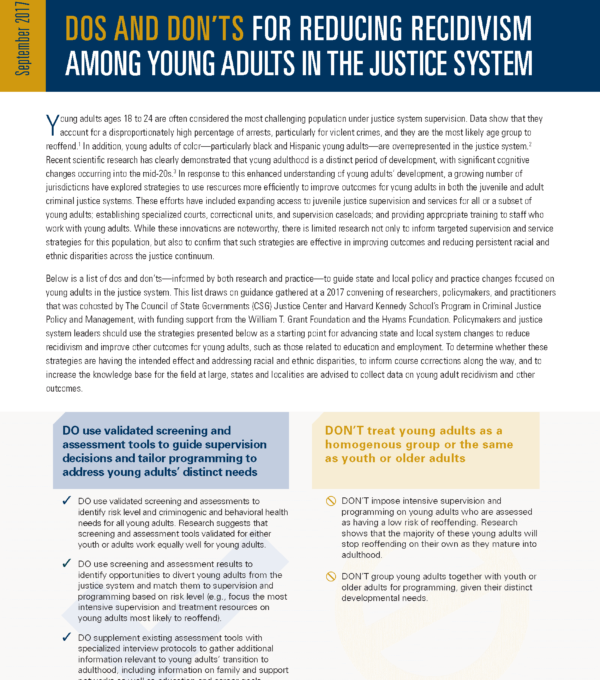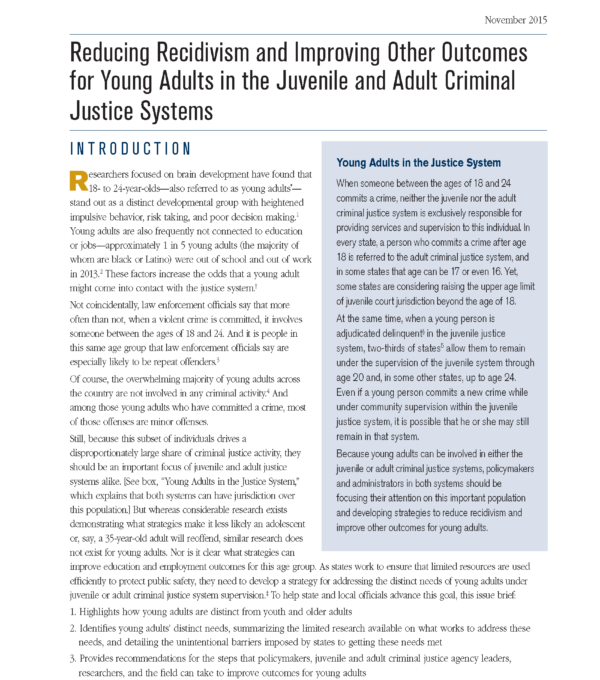Reducing Juvenile Recidivism
The juvenile justice system has seen marked changes: youth confinement and juvenile arrests for violent crimes dropped approximately 50 percent between 1997 and 2011. While these developments are admirable, they mask issues that remain in juvenile justice systems across the country. Many jurisdictions don't track recidivism, and those that do have high rates of reoffending—sometimes as high as 75 percent after three years. This featured publication lays out four core principles of reducing juvenile recidivism and lessons learned about how to implement those principles effectively.
In many states, up to 80 percent of the youth who are incarcerated are rearrested within 3 years of release, and outcomes for youth on community supervision are often not much better. In response to these challenges, the CSG Justice Center offers tools, resources, and technical assistance to help state and local officials develop and implement plans to improve outcomes for youth and use resources more efficiently.
The CSG Justice Center offers states and locales intensive technical assistance to develop system-wide plans, based on the research for “what works” to improve outcomes for youth in their juvenile justice systems. We engage in this effort through the following activities:
- Conduct a comprehensive assessment of juvenile justice policy and practice;
- Present key findings and recommendations to agency leaders and policymakers; and
- Guide state officials to translate the recommendations into a statewide plan to improve youth outcomes, which may include legislative, appropriation, and/or agency policy and practice changes.
If you are interested in learning more about this intensive technical assistance, please contact Nina Salomon at nsalomon@csg.org.
These infographics detail critical challenges faced by states in improving outcomes for youth; identifying key questions policymakers should ask; and offering strategies for protecting public safety and using resources more efficiently.
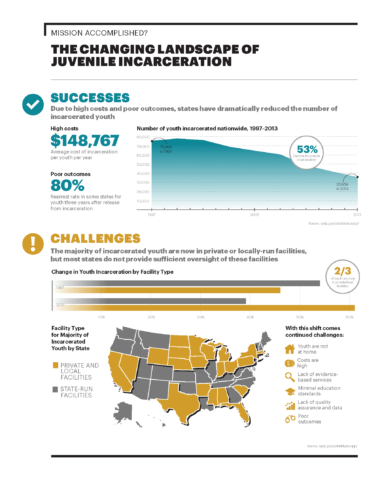
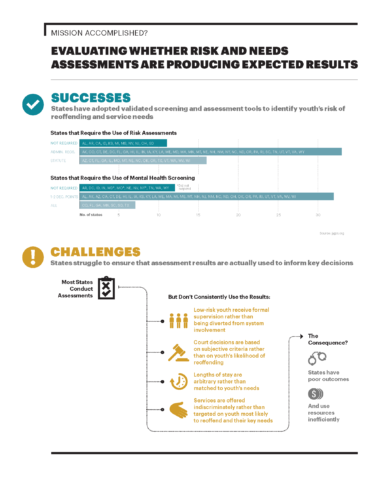
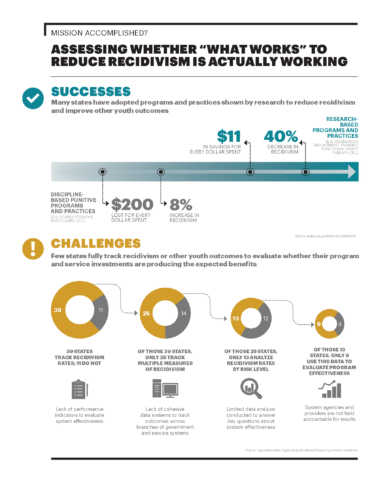
Checklists
The Council of State Governments (CSG) Justice Center has designed a set of tools to help juvenile justice leaders and other key stakeholders assess whether policy, practice, and resource allocation decisions are aligned with research on what is effective and identify opportunities to make changes that will improve outcomes for youth in the juvenile justice system.
Acknowledgements
New Hampshire Department of Corrections Commissioner Helen Hanks presents at the Medicaid and Corrections Policy Academy in-person meeting.
Read MoreThe Council of State Governments (CSG) Justice Center has launched the Collaborating for Youth and Public Safety Initiative…
Read MoreA bipartisan group of 88 lawmakers, led by Representatives Carol Miller (R-WV) and Danny Davis (D-IL), wrote a…
Read More Meet the Medicaid and Corrections Policy Academy Mentor States
Meet the Medicaid and Corrections Policy Academy Mentor States
New Hampshire Department of Corrections Commissioner Helen Hanks presents at the Medicaid and Corrections Policy Academy in-person meeting.
Read More Six States Commit to Improving Statewide Strategies to Address Youth Crime, Violence and Behavioral Health
Six States Commit to Improving Statewide Strategies to Address Youth Crime, Violence and Behavioral Health
The Council of State Governments (CSG) Justice Center has launched the Collaborating for Youth and Public Safety Initiative (CYPSI) in partnership with six states: California, New Mexico, New York, Ohio, Oklahoma, and Rhode Island. The initiative will help states develop, fund, and effectively implement a research-based service continuum to improve public safety and behavioral health, education, and other outcomes for youth.
Read More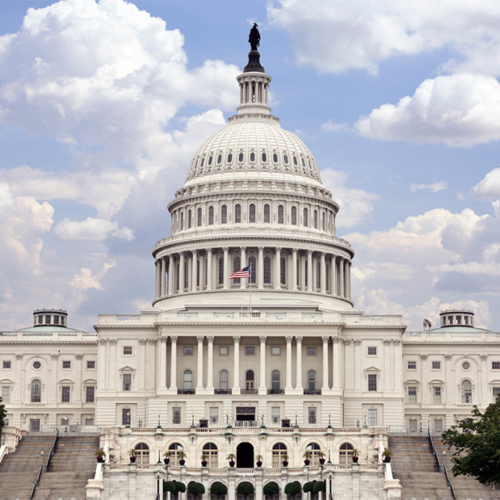 Bipartisan Group of 88 Lawmakers Push for Continued Funding for Reentry and Recidivism Programs
Bipartisan Group of 88 Lawmakers Push for Continued Funding for Reentry and Recidivism Programs
A bipartisan group of 88 lawmakers, led by Representatives Carol Miller (R-WV) and Danny Davis (D-IL), wrote a letter calling for continued funding for the Second Chance Act in the Fiscal Year 2026 Commerce, Justice, Science, and Related Agencies appropriations bill.
Read More










